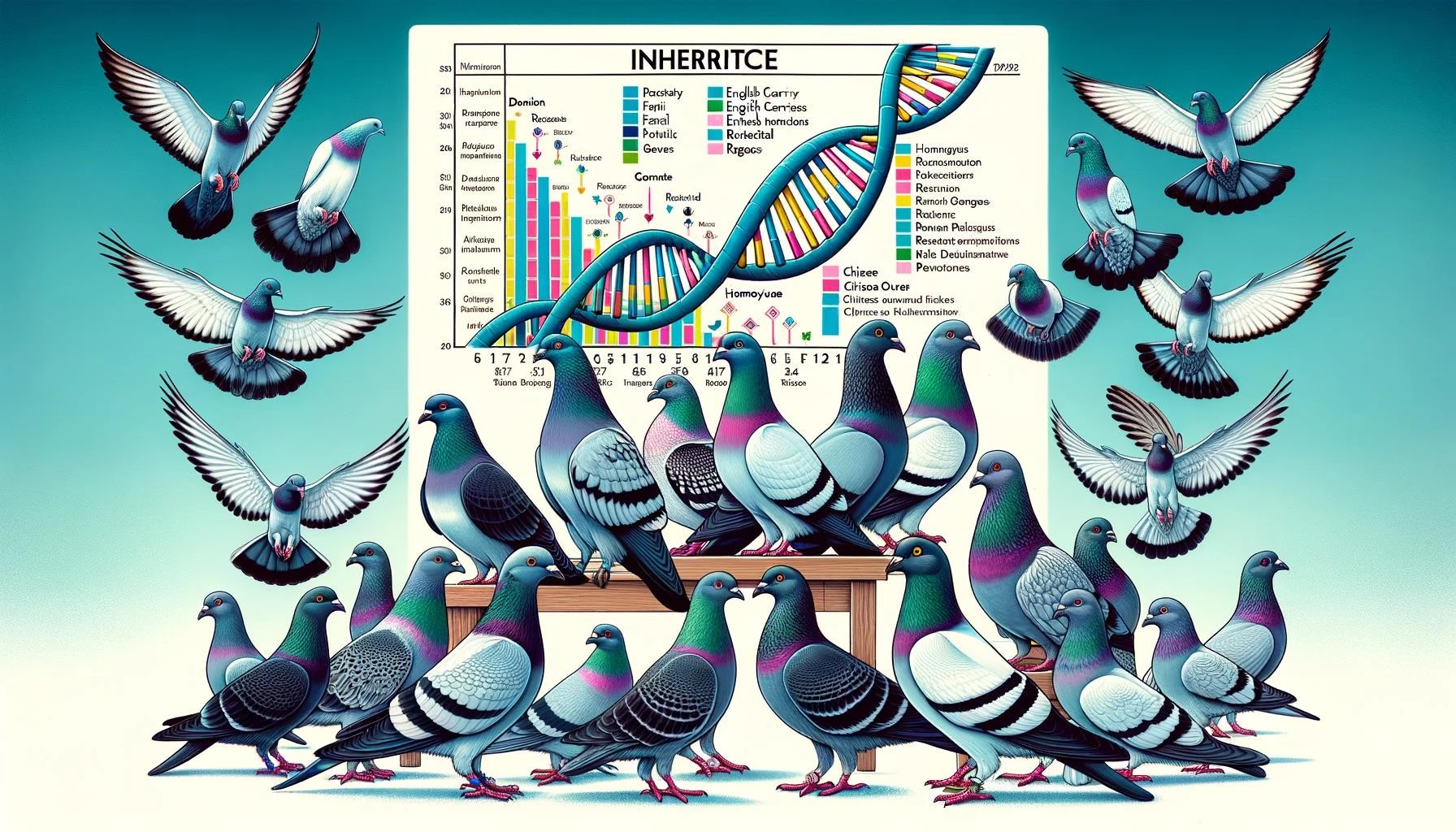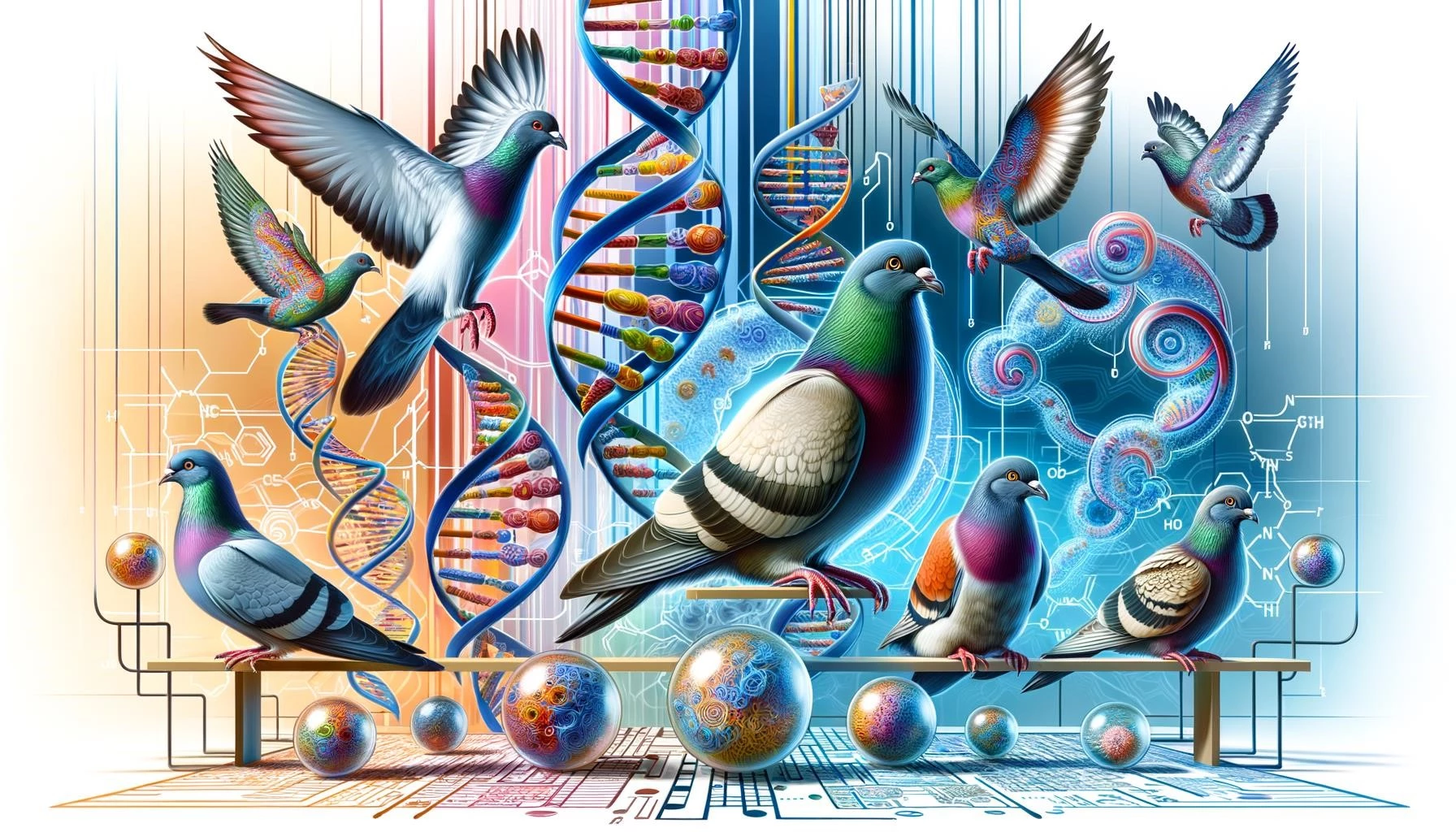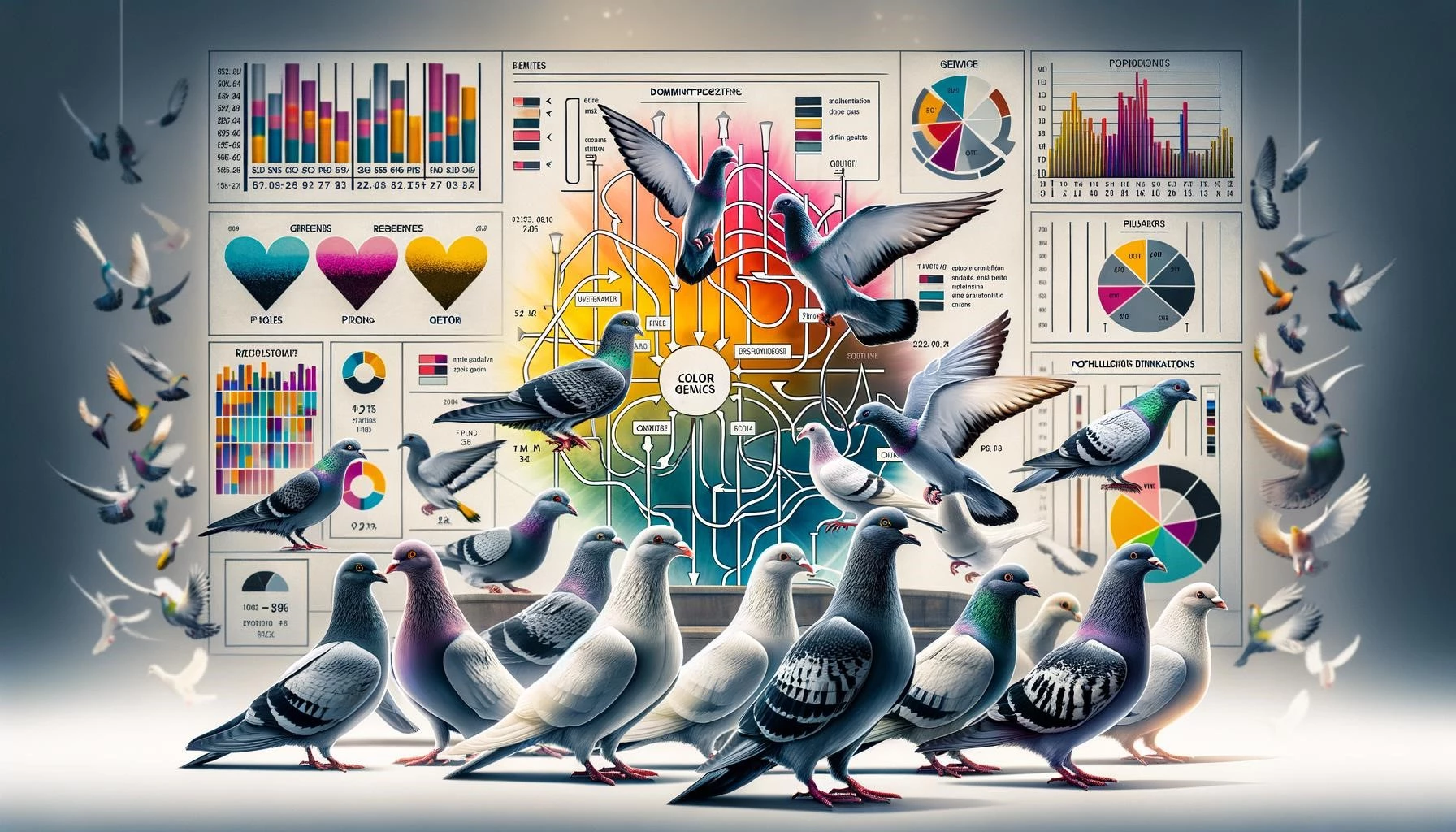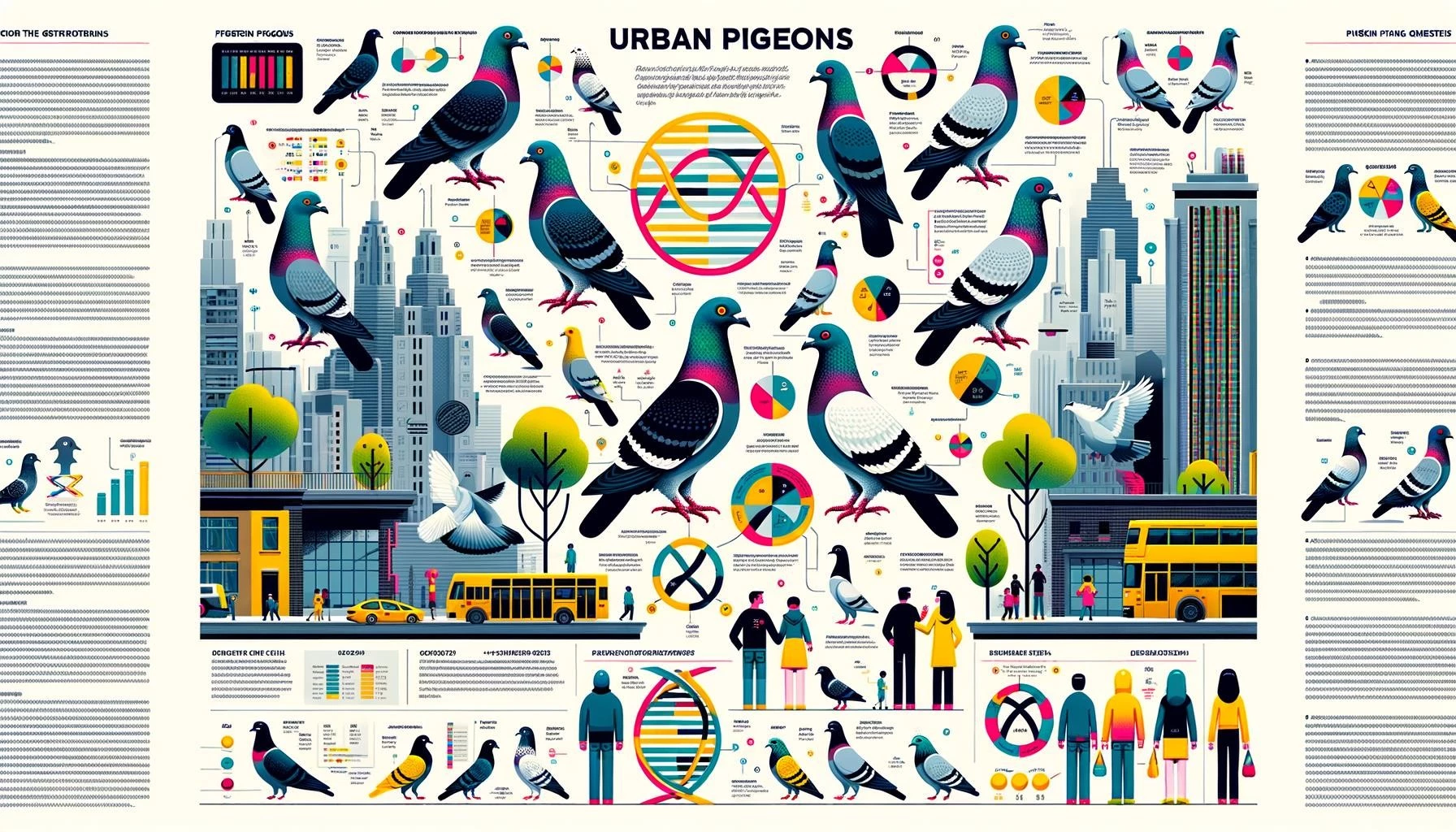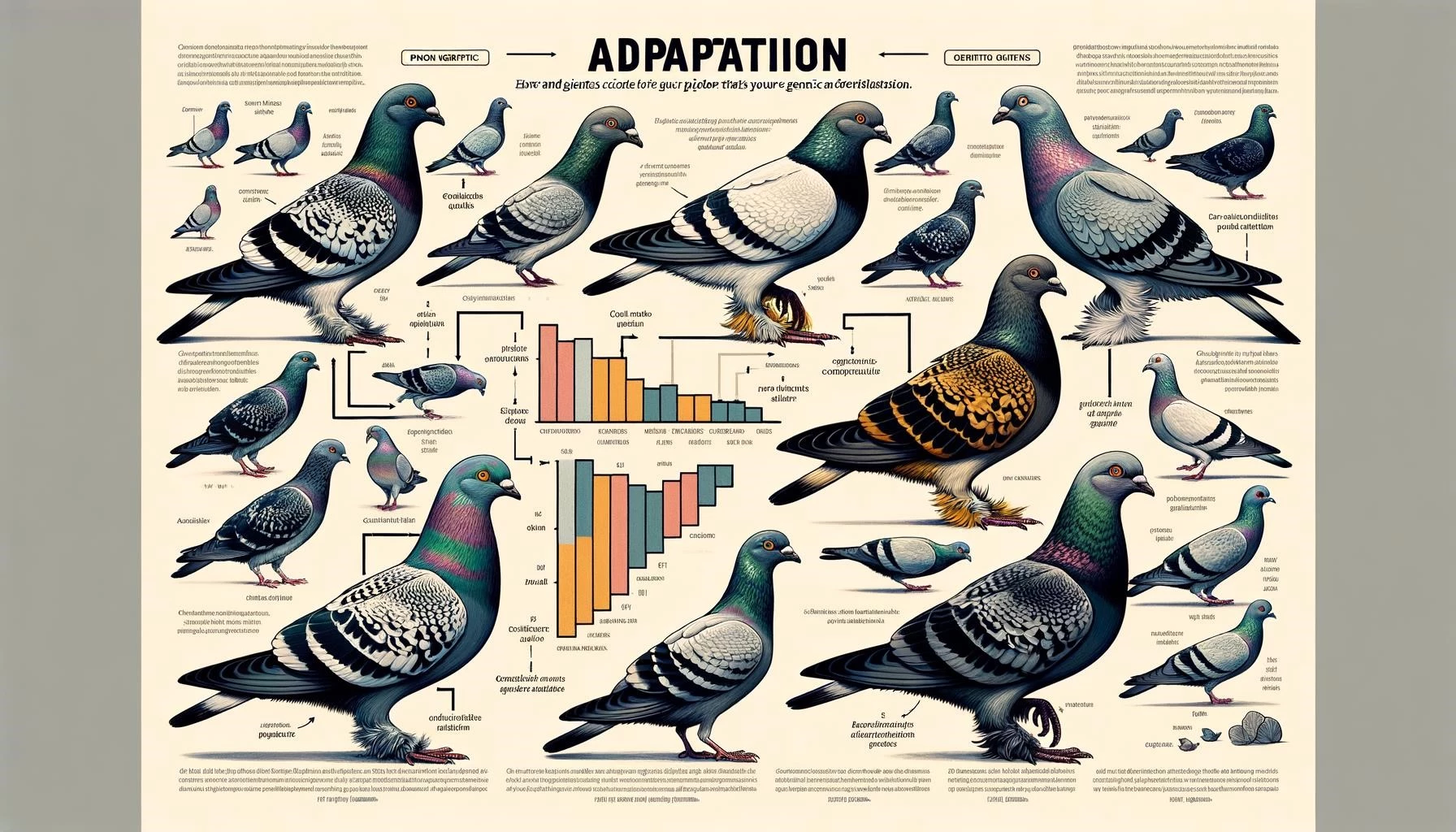Pigeons are an intriguing subject when it comes to the inheritance of traits. They have been domesticated for centuries, leading to the development of various breeds with unique physical and behavioral characteristics. Understanding the genetic basis of these traits is essential for breeders and scientists alike. In this article, we will delve into the inheritance patterns of traits in pigeons, examining the genetic variations that contribute to their diverse characteristics.
Key Takeaways
- Pigeons have been selectively bred for various traits, resulting in a wide range of physical and behavioral characteristics.
- Genetic variations, in the form of different alleles, play a crucial role in determining the inheritance of traits in pigeons.
- Some traits in pigeons are dominant, meaning they can be expressed even if only one parent carries the gene for that trait.
- Other traits are recessive, requiring both parents to carry the gene for the trait to be expressed in their offspring.
- Researchers have sequenced the genomes of domestic and feral pigeons, providing insights into the genetic basis of various traits.
Dominant and Recessive Traits in Pigeons
When it comes to pigeon genetics, certain traits are dominant, while others are recessive. Dominant traits are those that will be expressed in an individual even if only one parent carries the gene for that trait. For example, if one parent has the gene for yellow eye color, and the other parent has the gene for white eye color, their offspring will have yellow eyes because yellow is dominant over white.
On the other hand, recessive traits require both parents to carry the gene for the trait to be expressed in their offspring. If both parents carry a gene for recessive red coloring, their offspring will inherit two copies of the gene and exhibit recessive red pigmentation. It’s important to note that pigeons inherit two copies of each gene, one from each parent.
The Role of Genetic Variations and Alleles
Genetic variations, in the form of different alleles, are responsible for the wide range of traits seen in pigeons. Alleles are alternative forms of a gene that occupy the same position on paired chromosomes. They can be dominant or recessive, and their combination determines the expression of specific traits.
Understanding the different alleles and their interactions is crucial for breeders and researchers. Through selective breeding, specific alleles can be propagated or eliminated to enhance or reduce certain traits. Genetic studies have revealed that the production traits of meat pigeons, such as body size and meat production, are influenced by the presence of specific alleles.
Recent advancements in sequencing technology have allowed researchers to analyze the genomes of pigeons, including both domestic breeds and feral pigeons. These genome sequencing projects have provided valuable insights into the genetic basis of various traits, including color patterns, feather growth polarity, and limb identity.
Implications and Applications
Understanding the inheritance of traits in pigeons has implications for both breeders and scientists. For breeders, this knowledge enables them to produce pigeons with desired traits through selective breeding. By identifying the alleles responsible for specific traits, breeders can make informed breeding decisions to achieve their desired outcomes.
For scientists, studying the genetics of pigeons offers insights into fundamental genetic principles and mechanisms. Pigeons serve as a valuable model organism for studying genetic patterns and the genetic basis of trait evolution. Their genetic diversity and the development of various breeds make them an ideal subject of study for understanding the inheritance of traits.
In conclusion, pigeons exhibit a wide range of traits that have been selectively bred over centuries. The inheritance of these traits is controlled by genetic variations, with some traits being dominant and others recessive. Understanding the genetic basis of pigeon traits provides valuable insights into the mechanisms of inheritance and has practical applications for breeders and researchers alike.




